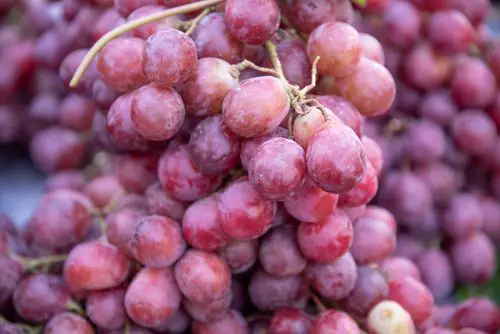Chateau Le Rondailh, owned by the Pallaruelo family for several generations in Sainte Foy La Longue, makes an unusual Bordeaux wine.
Their semi-sweet white wine is a Bordeaux Moelleux which we don’t often see feted outside France. The AOC Bordeaux Moelleux is difficult to pin down; its meaning has become somewhat lost in translation. When used in reference to wine the French term Moelleux describes the sensation of the wine as well as its taste: ‘soft, smooth, velvety, lush, mellow’.
These types of wines are quite exceptional – slightly sweet, rounded and supple with mouth quenching acidity and superb balance. It’s a crime that we miss out on them here in the UK so I am absolutely delighted to be able to offer Le Rondailh at Bordeaux-Undiscovered.
Chateau Le Rondailh’s Bordeaux Moelleux is a truly gorgeous wine blended from 80% Semillon and 20% Sauvignon Blanc from vines overlooking the Garonne Valley. This wine is characterised by its expressiveness in the mouth – it’s vibrant, fresh and lively.
The sensation of sweetness is ethereal and light. Le Rondailh has superb balance with flavours of pear, peach, melon and lemon and delicate notes of hazelnut and crystallized pineapple. This is a wine that would be a fantastic aperitif but it’s also a brilliant food wine that will accompany desserts, chocolate, cheeses (try it with Roquefort or Goats Cheese), pâtés, poultry, seafood and Asian cuisine.
Le Rondailh sits on the hills in Saint Macaire which lies on the right bank of the River Garonne between Sauternes and Saint Emilion.
The vineyard stretches out over three communes: Sainte Foy La Longue, Saint Laurent du Bois and Saint Martial and covers 98 acres – 24 of which are dedicated to Semillon and Sauvignon Blanc grapes grown especially for their white wines.
Some of the world’s greatest sweet wines are crafted from the Semillon grape – including those of neighbouring Sauternes but Moelleux wines have long been a speciality of the Côtes de Bordeaux Saint Macaire. However only 160 acres are now dedicated to producing these beautiful Moelleux wines.
This is a very old wine producing region: the town of Saint Macaire was originally a Roman town named Ligéna but was renamed Saint Macaire in the 4th century after the Greek Saint Makarios (meaning Blessed) who converted the town to Christianity.
Saint Macaire may be a peaceful backwater nowadays but in the Middle Ages it was a bustling and prosperous merchant port. The town itself is built on a rocky promontory overlooking the River Garonne which used to lap at the foot of the town’s southern ramparts until its course changed. Fortified walls – which still stand – were constructed to safeguard it.
The vineyards supplied wines which were shipped down the river in the 14th century and although there is no port there today wines from the New World are still being made with the extremely rare Saint Macaire red grape – a long lost Bordeaux grape variety!
The name Sainte Foy is given to several villages in the region and comes from the young Saint Faith who was martyred at the age of 12 in AD 303. She was the daughter of a local Roman Patrician who was brought up in the Christian faith by her governess. At a very tender age she showed great compassion – stealing bread from the family kitchen which she distributed to the poor.
The Spanish conquistadors who invaded America regarded Saint Foy (Santa Fe in Spanish) as one of their chief patronesses and Santa Fe in Mexico is named after her.
Sainte Foy La Longue, the home of Chateau Le Rondailh, is also home to Chateau Paradis Casseuil (an old property of the Sauternes First Growth Chateau Rieussec) which was acquired by Baron Eric de Rothschild in 1984. Why the chateau was named “Vines of Paradise” no one knows but it is an illustration of how good the terroir is in this area and of the quality that you can expect given the right tenure.
Saint Macaire is definitely one of the forgotten Bordeaux appellations that warrants rediscovery and I hope that as more of its wines make their way beyond its borders it gains the attention it deserves.

